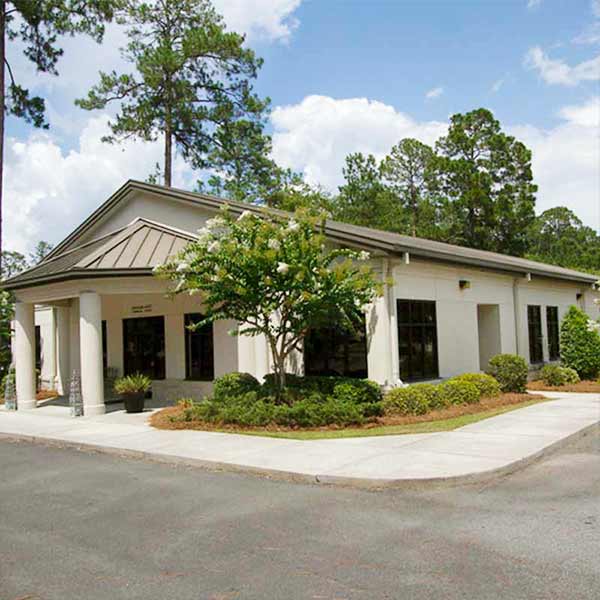What is Prescription Drug Addiction
Learn More About Prescription Drug Addiction
Prescription drug addiction is defined as the usage of a prescription medication in a way not intended by the prescribing doctor and can involve everything from taking a friend’s prescription painkiller, taking more than prescribed, or crushing pills in order to become intoxicated. Those who abuse prescription medications will do so despite the negative consequences they are experiencing and after a prolonged period of time an addiction may develop.
Many people suffer under the mistaken belief that because a prescription medication is prescribed by a physician, that these drugs are safer to use than street drugs. Unfortunately, this could not be farther from the truth. When any substances are abused, there is a chance that addiction can develop and it puts users at risk for adverse health consequences, including overdose. When taken in excessive amounts or when not needed, these drugs may affect the brain is ways very similar to illicit drugs. In order to avoid these negative consequences prescription meds should be take exactly as prescribed. Three primary classes of prescription drugs are abused, including downers, opioid narcotics, and stimulants.
Depressants: These central nervous system depressants include barbiturates (Phenobarbital, Seconal), benzodiazepines (Xanax, Valium, Ativan), and sleep medications (Ambien, Lunesta).
Opioids: These narcotics are prescribed to alleviate moderate to severe pain and include codeine, fentanyl, methadone, morphine, OxyContin, Vicodin, and Percodan.
Stimulants: Stimulants are highly-potent drugs that lead to increased energy and mental alertness, used to treat narcolepsy and ADHD. Stimulants include amphetamines such as Dexedrine, Adderall, and Methylphenidates including Concerta, and Ritalin.
Statistics
Statistics of Prescription Drug Addiction
Approximately seven million people in the U.S. reported past-month usage of prescription drugs for non-medical purposes in 2010. Every day in the U.S. about 2,000 teens will abuse prescription drugs for the first time; among youth between the ages of 12 and 17 years, nearly 15% of high school seniors reported past-year non-medical use of prescription medications. In fact, in 2010, 3,000 young adults died from prescription drug overdose – a 250% increase since 1999. For every death from a prescription drug overdose, 17 young adults sought treatment, while 66 visited the emergency room.
Causes and Risk Factors
Causes and Risk Factors for Prescription Drug Addiction
Researchers in the field of addiction have yet to determine the precise cause that leads to the development of addiction. Instead, it’s widely believed that a combination of factors lead to addiction. These include:
Genetic: People who have a first-degree relative, such as a parent or sibling, who have struggled with addiction are at greater risk for developing addiction than those without a history.
Physical: individuals who struggle with chronic health conditions or mental health disorders are at greater risk for developing addiction to prescription drugs. Additionally, prescription medications disrupt the way nerve cells normally communicate with one another. As prescription drugs are continuously abused the brain will adapt to overwhelming surges in dopamine by producing less of this neurotransmitter, which compels and individual to keep using to get the same euphoric feelings.
Environment: Environmental stressors play a large part in the development of prescription medication addiction. For example, having a peer group or circle of friends who abuse drugs may influence someone to begin abusing prescription medication. Additionally, growing up in a home where substance abuse was prevalent may lead an individual to begin abusing substances.
Risk Factors:
- Bad parenting
- Younger age
- Easy access to prescription drug
- Existence of mental health disorders
- Being physically or sexually abused
- Addiction to other substance
Signs and Symptoms
Signs and Symptoms of Prescription Drug Addiction
The symptoms and signs of prescription drug addiction will vary based upon the type of drug of abuse, frequency of use, use of other drugs, and co-occurring mental health conditions. The most common symptoms and signs of prescription drug addiction include:
Behavioral symptoms:
- Drop in attendance and performance at work
- May borrow or steal to get money
- Engaging in secretive behaviors
- Sudden change in friends and hobbies
- Frequently getting in fights, accidents, or illegal activities
Physical symptoms:
- Bloodshot eyes
- Changes in appetite
- Changes in sleep patterns
- Extreme weight loss or gain
- Deterioration of personal hygiene
- Tremors
- Slurred speech
- Impaired coordination
Psychosocial symptoms:
- Changes in personality or attitude
- Mood swings, irritability, angry outbursts
- Lack of motivation
- Periods of unusual hyperactivity or giddiness
- Anxious
- Paranoid or fearful with no reason
Effects
Effects of Prescription Drug Addiction
The effects of long-term prescription drug addiction will depend greatly upon length of abuse, drug of abuse, frequency of use, and presence of mental health disorders. The most common effects of prescription drug addiction include:
- Damage to the liver, kidneys, heart, and lungs
- Depression
- Anxiety
- Social isolation
- Job loss
- Dropping out of school
- Interpersonal relationship struggles
- Legal problems
- Death from overdose
Withdrawal and Overdose
Effects of Withdrawal and Overdose
Anyone who is addicted to prescription drugs or other substances should undergo withdrawal in a safe, monitored environment to reduce the risk for major complications. The following are symptoms commonly experienced during withdrawal:
- Agitation
- Intense cravings
- Aching muscles
- Profuse sweating
- Abdominal cramping
- Tremors
- Weakness
- Seizures
- Hallucinations
- Nausea and vomiting
When people begin taking medications in a way that does not follow the directions indicated by the prescription itself, the consequences can be extremely dangerous, even fatal. Without even realizing it, individuals can surpass the tolerance they have developed for the medication and end up overdosing. If you suspect that someone is experiencing an overdose, it is imperative that you call 911 immediately. Some of the most common signs that a person has overdosed on prescription medications include:
- Limp body
- Pale, clammy skin
- Slow, erratic heartbeat
- Dizziness
- Chest pain
- Loss of consciousness
- Making choking sounds
- Rapid respiration rate
- Respiratory depression or collapse
- Seizures
- Vomiting
- Coma
- Death
Co-Occurring Disorders
Co-Occurring Disorders & the Complexity of Prescription Drug Addiction
Prescription drug addiction is often accompanied by certain types of co-occurring, co-morbid mental health disorders. As many as 6 in 10 people who abuse drugs or alcohol have at least one other mental health disorder, including:
- Attention-deficit/hyperactivity disorder (ADHD)
- Conduct disorder – in youth
- Learning disabilities
- Eating disorders
- Depressive disorders
- Anxiety disorders
- Bipolar disorder
- Schizophrenia
- Post-traumatic stress disorder (PTSD)
- Obsessive-compulsive disorder (OCD)
- Social phobia








